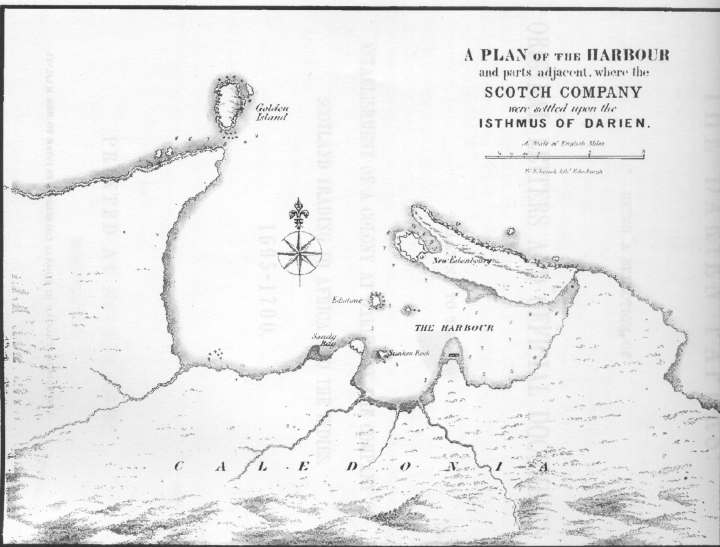Glasgow Museums recently acquired the painting A Highland Chieftain: Portrait of Lord Mungo Murray (c.1683) by Scottish-trained artist John Michael Wright (1617–1694) with support from the National Lottery Heritage Fund, Art Fund, Friends of Glasgow Museums and National Fund for Acquisitions. At face value it is an exuberant celebration of Highland dress and cosmopolitan Gaelic culture, but it also has links to the transatlantic slave trade.

In contrast to the promise and splendour reflected in the portrait, painted when Mungo Murray (1668–1700) was only 15 years old, Murray was to join the hundreds who died in Panama during the ‘Darien disaster’, Scotland’s failed attempt to establish its trading colony of New Caledonia. Anticipating political and economic benefits, Mungo Murray sailed from Bute in September 1699 as part of the second expedition organized by the Company of Scotland Trading to Africa and the Indies. As the fleet approached Caledonia Harbour they expected welcoming friends and countrymen at an established trading site. Instead, they found jungle reclaiming an abandoned fort, burned huts and no fellow Scots. During the following four months the distressed colonists suffered high mortality from tropical disease, internal discord, inadequate food supply and the constant threat of Spanish military action. Reverend Francis Borland, a member of the expedition, recorded that Lord Mungo Murray was one of the 300 members of the expedition to be buried at Darien.
The Darien initiative lasted only sixteen months, but a range of interfaces with the slave trade indicate plans for a much greater involvement in the lucrative merchandizing of human beings. As the first expedition set sail in 1698, Caribbean-based factors employed by slave trading interests played a major role in providing intelligence on Scottish activity to London, Madrid and Lisbon. The information was of particular interest to the owners of English slave ships that were contracted by the Portuguese Company to provide slaves to Spanish America. The abrupt impounding of some of these ships by the Governor of Cartagena to use in his campaign to expel the Scots brought swift and emphatic international reaction. King William III’s secretary of state and the ambassador to Lisbon each had to face infuriated slave trade representatives, resulting in the dispatch of Admiral Benbow with a squadron of Royal Navy ships to the Caribbean to demand the vessels’ release and restore the flow of slaves.

Investigation into New Caledonia’s internal history also reveals multiple references to involvement with slavery. An agreement with a Jamaican trader for reprisals against the Spanish following capture of a Scottish vessel stipulated ‘six hundred peeces of eight, or six able slaves’ for any man disabled during the operation. The colony’s translator, captured on Cuba and interrogated by the governor, revealed that among the trade goods the Scots brought to Panama were ‘tin, iron and copper plates, cups and goblets designed for barter with kings along the Guinea coast for Africans’.
Perhaps most revealing, however, is a letter dated 23 December 1699 from the Council of New Caledonia to the directors in Edinburgh. As they discuss their settlement’s future development they note planting and labour will not be feasible ‘unless negroes be procured, white men being unfitt for that work, more coastly in their maintainance, and so only fitt for defending the settlemt and overseeing the work’. This opinion not only expresses prevailing attitudes towards slavery, but also the specific inclusion of enslaved people into plans for the future of the Darien project, a project in which Lord Mungo and his family were complicit. One of the major subscribers, with an investment of 500 pound, was none other than John Murray (1631–1703), Marquess of Atholl, Lord Mungo Murray’s father.
Dr Julie Orr
Author of Scotland, Darien and the Atlantic World, 1698-1700 (Edinburgh University Press, 2018).
If you have a spare minute, we’d love to know what you think of our blog! You can share your thoughts here: http://bit.ly/LMMEvaluation
For more information on Glasgow Museums’ collections please visit http://collections.glasgowmuseums.com/ Images
(c) CSG CIC Glasgow Museums Collection
